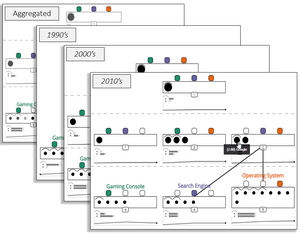The Research Group is Moving!
During winter term 2021/22, we move to University of Bamberg. From Oct. 15, 2021, Fabian Beck holds a full professor position on Information Visualization.
New webpage of the research group: https://www.uni-bamberg.de/vis
Publications
Publications of the research group since 2016. For earlier publications, please visit Fabian Beck's Google Scholar or DBLP profile.

Type of Publication: Article in Collected Edition
Visualizing Sets and Changes in Membership Using Layered Set Intersection Graphs
- Author(s):
- Agarwal, Shivam; Tkachev, Gleb; Wermelinger, Michel; Beck, Fabian
- Title of Anthology:
- Proceedings of Vision, Modeling, and Visualization
- Publisher:
- The Eurographics Association
- Publication Date:
- 2020
- ISBN:
- 978-3-03868-123-6
- Digital Object Identifier (DOI):
- doi:10.2312/vmv.20201189
- Fulltext:
- Visualizing Sets and Changes in Membership Using Layered Set Intersection Graphs (2.67 MB)
- Talk associated with this publication:
- Vision, Modeling, and Visualization 2020
- Recording:
- https://www.youtube.com/watch?v=hG_ioaZ2DEg
- Citation:
- Download BibTeX
Abstract
Challenges in set visualization include representing overlaps among sets, changes in their membership, and details of constituent elements. We present a visualization technique that addresses these challenges. The approach uses set intersection graphs that explicitly visualize each set intersection as a rectangular node and elements as circles inside them. We represent the graph as a layered node-link diagram using colors to indicate the sets. The layers reflect different levels of intersections, from the base sets in the lowest layer to potentially the intersection of all sets in the highest layer. We provide different perspectives to show temporal changes in set membership. Graphs for individual, two, and all timesteps are visualized in static, diff, and aggregated views. Together with linked views and filters, the technique supports the detailed exploration of dynamic set data. We demonstrate the effectiveness of the proposed approach by discussing two application examples. The submitted supplemental material contains a video showing proposed interactions in the implementation and the prototype itself.
